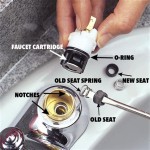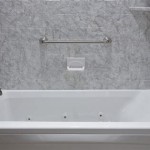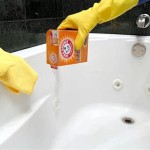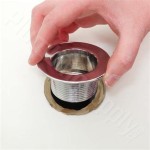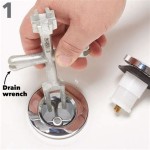Porcelain Enameled Steel Bathtub Vs. Cast Iron Bathtub: A Comparative Analysis
When selecting a bathtub, homeowners and contractors face a multitude of decisions revolving around materials, aesthetics, and functionality. Among the most common choices are porcelain enameled steel and cast iron bathtubs. Both materials offer distinct advantages and disadvantages, influencing factors such as heat retention, durability, weight, and cost. Understanding these differences is crucial for making an informed decision that aligns with specific needs and preferences.
This article provides a comprehensive comparison of porcelain enameled steel and cast iron bathtubs, examining their respective characteristics across various key performance indicators. The goal is to equip readers with the information necessary to evaluate the best option for their bathroom renovation or construction project.
Key Point 1: Material Composition and Manufacturing
The fundamental difference between porcelain enameled steel and cast iron bathtubs lies in their core material. Cast iron bathtubs are formed by pouring molten iron into a mold. Once cooled, the rough iron surface is coated with a layer of enamel and then fired at high temperatures to create a durable, smooth, and non-porous finish. This enamel is typically a porcelain-based material, providing a glossy appearance and resistance to stains and scratches.
Porcelain enameled steel bathtubs, on the other hand, are constructed from a sheet of stamped steel. This steel shell is then coated with a layer of porcelain enamel and fired in a similar manner to cast iron. The gauge (thickness) of the steel used significantly impacts the overall durability and rigidity of the bathtub. Thicker gauge steel bathtubs are generally more resistant to flexing and denting than thinner gauge options.
The manufacturing processes for both types of bathtubs are well-established. Cast iron production tends to be more energy-intensive due to the large amount of heat required to melt and mold the iron. Steel bathtub manufacturing can be more efficient in terms of energy consumption, but the stamping and enameling processes still require considerable resources.
Key Point 2: Heat Retention and Insulation
One of the most significant differentiators between porcelain enameled steel and cast iron bathtubs is their ability to retain heat. Cast iron, due to its high density and mass, excels at absorbing and retaining heat. This translates to a longer and more comfortable bathing experience, as the water temperature remains consistent for a more extended period. The heat absorbed by the cast iron radiates back into the water, helping to maintain its warmth.
Porcelain enameled steel bathtubs, in contrast, have poorer heat retention properties. Steel is a relatively thin material compared to cast iron, and it does not possess the same thermal mass. Consequently, water in a steel bathtub will cool down more rapidly. This can be an important consideration for individuals who enjoy long, relaxing soaks.
To mitigate the heat loss in steel bathtubs, some manufacturers offer models with insulation applied to the exterior. This insulation can be in the form of foam, fiberglass, or other materials designed to slow down the rate of heat transfer. While insulation can improve heat retention, it typically does not reach the level of performance offered by cast iron.
Key Point 3: Durability and Longevity
Both porcelain enameled steel and cast iron bathtubs are known for their durability, but they exhibit different strengths and weaknesses. Cast iron bathtubs are exceptionally robust and resistant to cracking or flexing under normal use. The thick cast iron core provides a solid foundation that can withstand significant weight and stress. Properly maintained cast iron bathtubs can last for several decades, even with frequent use.
The primary vulnerability of cast iron lies in its enamel coating. While the enamel is durable, it is susceptible to chipping if struck with a hard or heavy object. Once the enamel is damaged, the exposed cast iron can rust, leading to further deterioration. Repairing chipped enamel is possible, but it can be a complex process, and the repair may not perfectly match the original finish. Steel bathtubs are more resistant to chipping than cast iron because the steel underneath the enamel can flex slightly which can absorb the impact. A large chip on a cast iron tub often reveals the black cast iron underneath. On a steel tub, a large chip usually reveals a gray steel underlayer. The chip on a cast iron tub is more susceptible to rust.
Porcelain enameled steel bathtubs are also durable, but their resistance to damage depends heavily on the gauge of the steel used. Thicker gauge steel bathtubs are more resistant to denting and flexing than thinner gauge models. However, even with a thick gauge steel, the bathtub is still more prone to denting compared to cast iron. The enamel coating on steel bathtubs is also susceptible to chipping, although the underlying steel is less prone to rusting than exposed cast iron.
Overall, both materials offer good longevity when properly cared for. Cast iron bathtubs are generally considered to be more durable in terms of resisting structural damage, while steel bathtubs are more lightweight and less prone to chipping but are prone to denting. Choosing the right bathtub often depends on the specific usage conditions and the level of care the bathtub will receive.
Key Point 4: Weight and Installation
A significant difference between porcelain enameled steel and cast iron bathtubs is their weight. Cast iron bathtubs are considerably heavier than steel bathtubs, often weighing several hundred pounds. This weight presents challenges during installation, requiring specialized equipment and potentially reinforcing the floor structure to support the added load.
The heavy weight of cast iron bathtubs can also increase transportation costs and make it more difficult to maneuver the bathtub into place during renovation projects. Professional installation is almost always recommended for cast iron bathtubs to ensure proper support and prevent damage to the bathtub or surrounding structures.
Porcelain enameled steel bathtubs are significantly lighter, making them easier to handle and install. Their lower weight reduces transportation costs and simplifies the installation process. In many cases, a steel bathtub can be installed by a single person, although assistance is always recommended to prevent accidental damage.
The ease of installation offered by steel bathtubs can be a significant advantage, particularly in older homes or in situations where access is limited. The lighter weight also reduces the risk of structural damage during installation.
Key Point 5: Cost Considerations
The cost of porcelain enameled steel and cast iron bathtubs can vary depending on several factors, including size, style, manufacturer, and features. Generally, cast iron bathtubs tend to be more expensive than steel bathtubs. The higher cost reflects the more energy-intensive manufacturing process and the higher material cost of cast iron.
While the initial purchase price of a steel bathtub may be lower, the overall cost can be influenced by the need for additional insulation to improve heat retention. Additionally, the gauge of the steel used will impact the price, with thicker gauge steel bathtubs generally costing more.
Installation costs should also be considered when comparing the total cost of ownership. The more complex installation requirements of cast iron bathtubs can add to the overall expense. The relatively simpler installation of steel bathtubs can help to offset the initial cost difference.
Ultimately, the most cost-effective choice will depend on the specific project requirements and budget constraints. Homeowners should carefully weigh the initial purchase price against the long-term benefits and potential maintenance costs of each type of bathtub.
Key Point 6: Aesthetic Options and Design Flexibility
Both porcelain enameled steel and cast iron bathtubs are available in a variety of styles, shapes, and colors. This allows homeowners to choose a bathtub that complements their overall bathroom design. However, there are some differences in the design flexibility offered by each material.
Cast iron bathtubs are often associated with classic and traditional designs. The casting process allows for intricate details and shapes, making them suitable for freestanding or clawfoot bathtubs. The enamel coating can be applied in a range of colors, although white is the most common choice.
Porcelain enameled steel bathtubs are typically available in a wider range of modern and contemporary designs. The stamping process allows for more complex and streamlined shapes. Steel bathtubs are also available in a variety of colors and finishes, including textured surfaces.
The aesthetic appeal of both types of bathtubs is largely a matter of personal preference. Homeowners should consider the overall style of their bathroom and choose a bathtub that complements the existing decor. The availability of different styles, shapes, and colors makes it possible to find a suitable option regardless of the chosen material.
Key Point 7: Environmental Impact
The environmental impact of porcelain enameled steel and cast iron bathtubs is a complex issue that involves several factors, including material sourcing, manufacturing processes, transportation, and end-of-life disposal.
The production of cast iron requires significant energy input due to the high temperatures needed to melt and mold the iron. This can result in higher greenhouse gas emissions compared to steel production. However, cast iron is a highly durable material that can last for many years, reducing the need for frequent replacements.
Steel production also has environmental impacts, including the consumption of energy and resources. However, steel is a readily recyclable material, and recycled steel can be used in the production of new bathtubs and other products. This can help to reduce the overall environmental footprint of steel bathtubs. The shipping of steel bathtubs also requires less energy due to their reduced weight.
The enamel coating on both types of bathtubs also has an environmental impact, as the production of enamel requires energy and resources. Some manufacturers are exploring the use of more sustainable enamel formulations that reduce the environmental footprint of the enameling process.
Ultimately, the environmental impact of porcelain enameled steel and cast iron bathtubs depends on a variety of factors, and there is no clear winner in terms of overall sustainability. Homeowners should consider the entire lifecycle of the product, from material sourcing to end-of-life disposal, when making their decision.

4 Common Bathtub Materials Pros Cons What To Buy For Your Bathroom

Steel Enameled Bathtub Vs Cast Iron Bathtubs
How To Choose The Best Bathtub Material A Comparison Guide Vevano

Which Is A Better Bathtub Acrylic Vs Porcelain Enameled Pressed Steel

How To Tell What Your Bathtub Is Made Of Giving Tree Home

Fireclay Vs Cast Iron Sink Pros Cons And How To Choose Van Dyke S Rers

The Benefits Of A Cast Iron Sink Kingston Brass

Is Cast Iron Tub Refinishing A Viable Choice America Pros

Fireclay Vs Cast Iron Sinks Which Is Better

Why Choose Cast Iron Sinks Ceco
Related Posts

